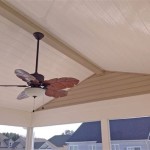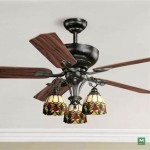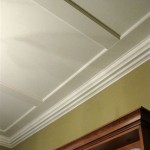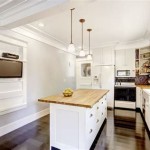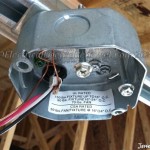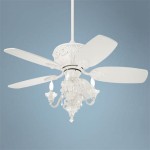How To Make Coffered Ceiling Designs
Coffered ceilings are a beautiful and elegant architectural feature that can add a touch of sophistication to any room. They are characterized by recessed panels, often in a square or rectangular shape, that create a grid-like pattern on the ceiling. The panels can be made from a variety of materials, including wood, plaster, and even metal, and they can be painted or stained to match the décor of the room.
Coffered ceilings have a long and rich history, dating back to ancient Roman times. They were originally used to improve the acoustics of large spaces, but they have since become a popular design element for both residential and commercial buildings. Today, coffered ceilings are often seen in living rooms, dining rooms, bedrooms, and even bathrooms. They can be used to create a sense of grandeur, add visual interest to a room, or simply to enhance the overall design aesthetic.
Planning and Design
The first step in creating a coffered ceiling is to carefully plan the design. This involves considering the size and shape of the room, the desired aesthetic, and the available budget. Here are some factors to consider:
- Room Size: The size of the room will determine the scale of the coffers. Smaller rooms may require smaller coffers to avoid making the space feel cramped. Larger rooms can accommodate larger coffers, which can add a dramatic touch.
- Ceiling Height: The height of the ceiling will also influence the design. A low ceiling might benefit from shallow coffers, while a high ceiling can handle deeper coffers.
- Style: The style of the room should be taken into account. For example, a traditional room might benefit from a more ornate coffered ceiling design, while a modern room might look better with a simpler, more minimalist design.
- Budget: The budget for the project will determine the materials and construction methods that can be used. Wood is a popular choice for coffered ceilings, but it can be expensive, especially for larger rooms.
Once the basic design has been determined, it is important to create detailed plans and drawings. These plans should include the dimensions of the coffers, the layout of the grid, and any decorative elements. Creating a 3D model can also be helpful to visualize the final design and make necessary adjustments.
Construction
The construction of a coffered ceiling is a complex process that requires careful planning and execution. It is often best left to experienced professionals. Here are the basic steps involved:
- Framing: The first step is to build the frame for the coffers. This is typically done using wood or metal studs, which are attached to the existing ceiling joists. The framing must be strong and stable enough to support the weight of the ceiling panels.
- Sheathing: Once the framing is in place, the sheathing for the coffers is installed. This is typically made of plywood or drywall. The sheathing provides a smooth surface for the finish layers.
- Finishing: The final step is to finish the coffers. This may involve painting, staining, or adding moldings.
The specific construction methods will vary depending on the design of the coffered ceiling. Some designs may require the use of specialized tools and techniques, while others can be built using more traditional methods.
Materials and Finishes
There are a variety of materials that can be used for coffered ceilings. Some common materials include:
- Wood: Wood is a classic choice for coffered ceilings. It is durable, versatile, and can be finished in a variety of ways. Common wood species used include oak, maple, cherry, and walnut.
- Plaster: Plaster is a more traditional material that can be used to create a smooth and elegant finish. It is typically applied over a wire mesh or lath.
- Drywall: Drywall is a more cost-effective option that can be easily painted or textured. It is also a good choice for creating intricate designs.
- Metal: Metal can be used to create a modern and industrial look. It can also be used to create custom designs.
The finish for the coffered ceiling should be chosen to complement the overall aesthetic of the room. Some popular finish options include:
- Paint: Paint is a versatile finish that can be used to create a variety of looks. It can be used to match the color of the walls or to create a contrasting effect.
- Stain: Stain is a good choice for highlighting the natural beauty of wood. It can be used to create a variety of colors and finishes.
- Wallpaper: Wallpaper can be used to add a decorative touch to the coffered ceiling. It is available in a wide variety of patterns and colors.
Regardless of the chosen materials and finishes, the construction of a coffered ceiling is a complex project that requires expertise and careful planning. If you are considering adding a coffered ceiling to your home, it is important to consult with a qualified contractor or architect to ensure that the project is done correctly.

Coffered Ceiling Diy Step By Install Guide Arched Manor

Easy Diy Coffered Ceiling Idea Simple Low Profile Design Steps And

Coffered Ceiling Installation Monks Home Improvements

Coffered Ceiling Diy Tutorial Palmetto Highway

Coffered Ceiling Moulding Plans From Kuiken Brothers Design Guide

Easy Diy Coffered Ceiling Idea Simple Low Profile Design Steps And Dining Room

How To Build Coffered Ceilings

Faux Coffered Ceiling Confessions Of A Serial Do It Yourselfer

Our Home From Scratch

Coffered Ceiling Moulding Plans From Kuiken Brothers Design Guide
Related Posts


